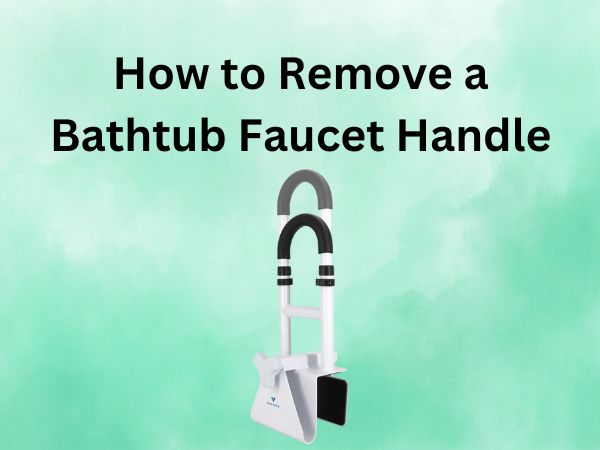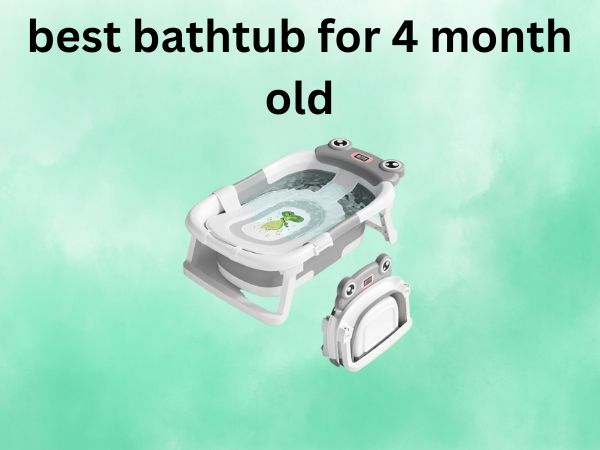How to Remove a Bathtub Faucet Handle [A Complete DIY Guide]
Are you staring at a leaky, outdated, or broken bathtub faucet handle and wondering how to tackle this seemingly daunting plumbing task? Don’t worry! Removing a bathtub faucet handle is a manageable DIY project that can save you the cost of calling a professional. Whether you’re planning to replace it with a shiny new fixture or need to access the valve for repairs, I’ve got you covered with this comprehensive guide.
Table of Contents
Understanding Your Bathtub Faucet
Before diving in with your tools, it’s important to understand what you’re working with. Bathtub faucets come in various designs, and knowing which type you have will make the removal process much smoother.
Common Types of Bathtub Faucet Handles
Your bathtub likely has one of these common handle types:
- Knob handles: These are round or oval-shaped and typically turn clockwise and counterclockwise to control water flow.
- Lever handles: These have a single lever that rotates to adjust both water temperature and flow.
- Cross handles: These have a distinctive X or cross shape and are common in vintage or traditional bathroom designs.
- Push-pull handles: These require pushing or pulling to control water flow and turning to adjust temperature.
Take a moment to identify your handle type before proceeding, as the removal technique may vary slightly.
Why You Might Need to Remove Your Bathtub Faucet Handle
There are several reasons you might find yourself needing to remove a faucet handle:
- Fixing a leak or drip
- Replacing a worn-out or outdated handle
- Accessing the valve cartridge for replacement
- Deep cleaning calcium deposits or mineral buildup
- Upgrading to a more modern fixture
Whatever your reason, knowing the proper removal technique will help you avoid damaging your plumbing or bathroom fixtures.
Tools You’ll Need for the Job
Having the right tools at hand makes this job significantly easier. Nothing’s more frustrating than getting halfway through a project only to realize you’re missing a crucial tool!
Essential Tools for Most Faucet Handles
- Flathead screwdriver
- Phillips screwdriver
- Allen wrench set (hex keys)
- Adjustable wrench
- Pliers (preferably channel-lock or water pump pliers)
- Penetrating oil (like WD-40 or Liquid Wrench)
- Clean rags or towels
Additional Tools for Specific Handle Types
- Utility knife (for removing caulk or breaking paint seals)
- Hair dryer or heat gun (for stubborn handles)
- Basin wrench (for hard-to-reach nuts)
- Teflon tape (for reassembly)
- Soft cloth or masking tape (to protect chrome finishes)
I recommend gathering all your tools before starting. It’s no fun to be kneeling in an awkward position with a partially disassembled faucet while searching for a specific wrench!
Preparation Steps Before Removal
A little preparation goes a long way in making this task easier and preventing potential issues.
Shutting Off the Water Supply
This is absolutely crucial! Before you begin any plumbing project, you need to shut off the water supply:
- Look for dedicated shutoff valves near your bathtub. Some installations have accessible valves specific to the tub.
- If you can’t find dedicated valves, locate and turn off the main water supply to your home, usually found near your water meter.
- After shutting off the water, turn on the faucet to drain any remaining water in the pipes and relieve pressure.
Skip this step, and you might find yourself starring in your own personal indoor waterfall drama!
Protecting Your Bathtub Surface
Place a towel or rag in the tub basin underneath your work area. This serves two important purposes:
- It protects your tub from scratches if you drop tools.
- It catches any small parts that might otherwise go down the drain.
You might also want to cover the drain with a cloth or drain cover as an extra precaution against losing tiny screws or components.
Step-by-Step Guide to Remove Different Types of Faucet Handles
Now that you’re prepared, let’s get to the main event—removing that handle!
Removing a Knob-Style Handle
Knob handles are perhaps the most common type found in bathtubs.
Dealing with Decorative Caps
Many knob handles have a decorative cap on top that conceals the mounting screw:
- Look for a small button or cap on the top or front of the handle.
- Gently pry it off using a flathead screwdriver. Insert the tip at the edge and carefully lift.
- If it’s stubborn, place a cloth over the cap and use pliers for better grip, being careful not to damage the finish.
Unscrewing the Handle
Once the cap is removed:
- You’ll see a screw in the center of the handle. Use your Phillips or flathead screwdriver (depending on the screw type) to remove it.
- Turn counterclockwise until the screw is completely loose.
- Gently pull the handle straight out. If it doesn’t come off easily, wiggle it slightly while pulling.
- If the handle is stuck, apply a small amount of penetrating oil around the base, wait 10-15 minutes, and try again.
Removing a Lever-Style Handle
Lever handles often have a different mounting mechanism than knob handles.
Accessing Hidden Set Screws
- Examine the underside or base of the lever handle carefully—many have a small set screw hidden from view.
- The set screw is typically an Allen (hex) screw. Identify the correct size hex key from your set.
- Insert the hex key and turn counterclockwise to loosen the set screw.
- Once the set screw is loose or removed, you should be able to pull the handle off the stem.
- If the handle is stubborn, apply penetrating oil at the base and wait before trying again.
Removing a Cross-Handle Faucet
Cross handles often follow a similar procedure to knob handles:
- Look for a decorative cap in the center of the cross.
- Pry off this cap using a flathead screwdriver.
- Remove the exposed screw using the appropriate screwdriver.
- Pull the handle straight off the stem.
- If there’s resistance, apply penetrating oil and wait before trying again.
Dealing with Stuck or Corroded Handles
Bathroom fixtures are prone to corrosion and mineral buildup due to constant exposure to water and humidity. A handle that hasn’t been removed in years might put up quite a fight!
Using Penetrating Oil for Stubborn Handles
- Apply a generous amount of penetrating oil (like WD-40) around the base of the handle where it meets the wall or fixture.
- Allow the oil to penetrate for at least 15-30 minutes—longer for severely corroded handles.
- Wipe away excess oil and try removing the handle again.
- If needed, reapply and wait longer. Sometimes overnight application works wonders for extremely stuck handles.
The Heat Method for Extremely Stuck Handles
Heat can break the bond of corrosion and expand metal slightly, making removal easier:
- Use a hair dryer on its highest setting to heat the area around the base of the handle for 1-2 minutes.
- While it’s still warm, attempt to remove the handle.
- Be careful not to overheat plastic components, as they can melt or deform.
- Combine heat with penetrating oil for maximum effectiveness on the toughest stuck handles.
Remember, patience is key with stubborn fixtures. Forcing them can lead to broken handles or damaged plumbing.
What to Do After Removing the Handle
Once you’ve successfully removed the handle, you’re likely either replacing it or addressing an issue with the valve.
Inspecting for Damage or Wear
Take a moment to examine the removed handle and exposed valve components:
- Check the handle for cracks, wear, or mineral buildup.
- Look at the stem or cartridge for signs of corrosion or damage.
- Inspect O-rings and washers for wear, flattening, or deterioration.
- Check for mineral deposits that might be affecting function.
This inspection can help you identify the cause of leaks or other issues.
Cleaning Components Before Replacement
If you’re planning to reinstall the same handle:
- Soak metal parts in white vinegar for 30 minutes to dissolve mineral deposits.
- Use an old toothbrush to scrub away stubborn buildup.
- Rinse thoroughly and dry completely before reassembly.
- Consider replacing rubber gaskets, O-rings, or washers even if they look okay—they’re inexpensive and often the source of leaks.
Installing a New Faucet Handle
Whether you’re reinstalling your cleaned original handle or installing a brand new one, the process is essentially the reverse of removal:
- Ensure the valve stem is clean and free of old gasket material.
- If applicable, place any required washers or adaptors onto the stem.
- Align the handle with the stem, ensuring it points in the correct direction when in the “off” position.
- Secure the handle by tightening the set screw or mounting screw.
- Replace any decorative caps by pressing them firmly into place.
- Turn the water supply back on and test your work by operating the handle and checking for leaks.
Troubleshooting Common Issues
Even with careful work, you might encounter some challenges during this project.
Dealing with Stripped Screws
A common frustration is encountering stripped screw heads that won’t turn:
- Try using a rubber band between your screwdriver and the stripped screw for better grip.
- Use screw extraction tools designed specifically for this purpose.
- In extreme cases, you might need to drill out the screw—but this should be a last resort.
Handling Broken Handles During Removal
If your handle breaks during removal (especially likely with older plastic handles):
- Use pliers to grasp any remaining portions of the handle.
- If the handle breaks off completely, focus on removing the stem or mounting hardware.
- Take pieces of the broken handle to a hardware store to find a suitable replacement.
- Consider upgrading to a metal handle for greater durability.
When to Call a Professional
DIY is great, but sometimes calling a professional is the wiser choice:
- If you encounter corroded or damaged pipes behind the wall
- If removal attempts result in leaking or water damage
- If your plumbing is very old or has unusual fixtures
- If you’ve tried multiple approaches without success
- If you’re uncomfortable working with specialized plumbing tools
Remember, sometimes paying a professional can save money in the long run by preventing costly water damage or more extensive repairs.
FAQs About Removing Bathtub Faucet Handles
1. What should I do if there’s no visible screw on my faucet handle?
Some modern faucet handles have very well-hidden set screws. Check carefully along the base or underside of the handle. In some designs, there might be a small cap or cover that needs to be pried off first. If you still can’t find a screw, consult your faucet’s manufacturer website or manual, as some proprietary designs have unique removal methods.
2. How do I know which replacement handle to buy?
Take your old handle to a plumbing supply store or hardware store for matching. Be sure to note the brand name if visible, the number of water lines it connects to (single or double handle), and the type of valve stem it attaches to. Taking photos of the removed handle and exposed valve can also help ensure you get the right replacement.
3. My faucet handle is extremely corroded and won’t budge even with penetrating oil. What else can I try?
For extremely corroded handles, try applying penetrating oil and letting it sit overnight. You can also try a 50/50 mixture of acetone and automatic transmission fluid as a powerful homemade penetrant. As a last resort, carefully apply heat with a hair dryer while gently tapping the handle with a rubber mallet to help break up corrosion.
4. Is it normal for water to drip after removing the handle?
Yes, some residual water might drip even after shutting off the water supply. This is normal and simply the remaining water in the pipes. However, if you have a steady stream of water, you likely haven’t fully shut off the water supply and should address this before continuing.
5. How often should bathtub faucet handles be removed for maintenance?
While there’s no strict schedule, it’s good practice to remove and clean bathtub handles every 2-3 years to prevent mineral buildup and corrosion. This preventative maintenance makes future removal easier and extends the life of your fixtures. If you live in an area with hard water, consider doing
Conclusion
Removing a bathtub faucet handle is definitely within the capabilities of most homeowners with basic tools and a bit of patience. By identifying your handle type, gathering the right tools, and following the appropriate steps, you can successfully remove your bathtub faucet handle for replacement or repair.
Remember to work carefully, avoid forcing components, and use penetrating oil generously for stubborn parts. Take your time, and don’t hesitate to call a professional if you encounter serious difficulties.
With the knowledge you’ve gained from this guide, you’re well-equipped to tackle this common household plumbing task. Not only will you save money on a service call, but you’ll also gain the satisfaction of successfully completing a DIY project!



